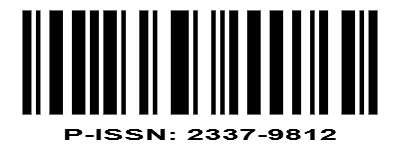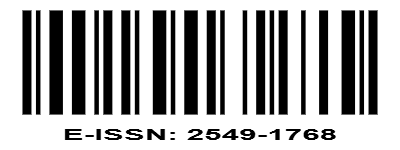Aplikasi Bradyrhizobium japonicum DAN Aeromonas salmonicida Pada Penanaman Kedelai Di Tanah Asam Dalam Percobaan Rumah Kaca
DOI:
https://doi.org/10.22373/biotik.v2i1.229Keywords:
Bradyrhizobium japonicum, Aeromonas salmonicid, Acid Soil, SoybeanAbstract
Kedelai (Glycine max) merupakan salah satu tanaman pangan yang dibudidayakan. Kebutuhan kedelai yang selalu meningkat setiap tahun mendorong usaha peningkatan terhadap produksi kedelai. Upaya peningkatan produksi dapat dilakukan dengan menggunakan pupuk hayati dan memanfaatkan lahan yang kurang produktif di Indonesia. Pupuk hayati yang digunakan mengandung isolat Bradyrhizobium japonicum sebagai penambat nitrogen dan Aeromonas salmonicida sebagai pelarut fosfat. Isolat yang terdapat dalam pupuk hayati diharapkan dapat membantu pertumbuhan kedelai di tanah asam dengan menyediakan unsur nitrogen dan fosfat. Penelitian ini bertujuan untuk mengetahui pengaruh pemberian pupuk hayati yang terdiri atas B. japonicum (BJ 11 wt) dan A. salmonicida pada penanaman kedelai di tanah asam. Tanaman percobaan dibuat dalam empat kelompok, yaitu dengan inokulasi Isolat BJ 11 (wt), PP, BJ 11 ditambah dengan PP, dan tanpa inokulasi (kontrol). Hasil penelitian menunjukkan bahwa aplikasi B. japonicum dan A. salmonicida cenderung dapat meningkatkan laju pertumbuhan tanaman, jumlah daun, dan bobot kering akar. Kata Kunci: Bradyrhizobium japonicum, Aeromonas salmonicid, Tanah Masam dan Kedelai Soybean (Glycine max) is one of cultivated food crops. Since the need of soybean is always increased every year, it needs some efforts to improve soybean production. One of the steps can be done is by using biofertilizer in a less productive land such as acid soil. Biofertilizer that used in this study consist of Bradyrhizobium japonicum as nitrogen fixation and Aeromonas salmonicida as phosphate solubilizer bacteria (PP). Isolates contained in the biological fertilizer is expected to help the growth of soybean in acid soils by providing elements of nitrogen and phosphate. The aim of this research was to know the effect of using biofertilizer consisted of B. japonicum (BJ 11 wt) and A. salmonicida (PP) to soybean growth in acid soils. The experiment was arranged with four group treatments that were inoculation with BJ 11 (wt), PP, BJ 11 plus PP, and without inoculation (as control). The results showed that the application of B. japonicum and A. salmonicida as inoculant mixture tend to increase plant growth, leaf number, and dry root weight. Keywords: Bradyrhizobium japonicum, Aeromonas salmonicid, Acid Soil and SoybeanDownloads
Download data is not yet available.
Downloads
Published
2018-02-08
Issue
Section
Artikel
License
Authors who publish with BIOTIK: Jurnal Ilmiah Biologi Teknologi dan Kependidikan agree to the following terms:
- Authors retain copyright and grant the journal right of first publication with the work simultaneously licensed under a Creative Commons Attribution License that allows others to share the work with an acknowledgement of the work's authorship and initial publication in this journal.
- Authors are able to enter into separate, additional contractual arrangements for the non-exclusive distribution of the journal's published version of the work (e.g., post it to an institutional repository or publish it in a book), with an acknowledgement of its initial publication in this journal.
- Authors are permitted and encouraged to post their work online (e.g., in institutional repositories or on their website) prior to and during the submission process, as it can lead to productive exchanges, as well as earlier and greater citation of published work.
How to Cite
Aplikasi Bradyrhizobium japonicum DAN Aeromonas salmonicida Pada Penanaman Kedelai Di Tanah Asam Dalam Percobaan Rumah Kaca. (2018). BIOTIK: Jurnal Ilmiah Biologi Teknologi Dan Kependidikan, 2(1), 10-16. https://doi.org/10.22373/biotik.v2i1.229











